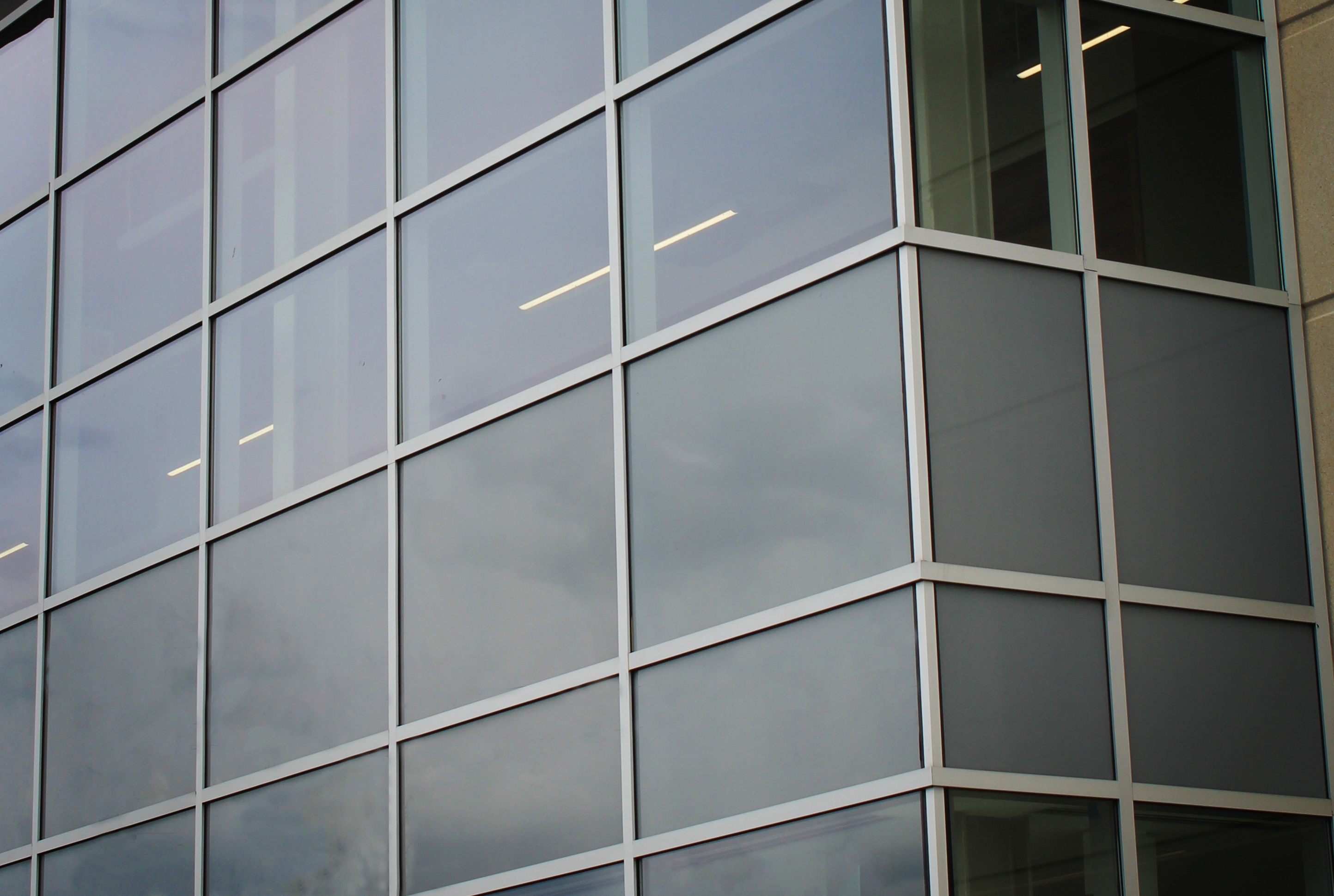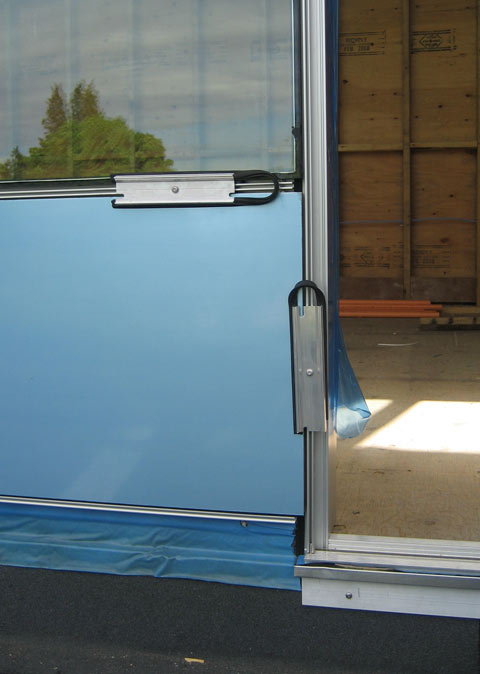The Main Principles Of Infill Panel Wall Insulated
Table of ContentsThings about Infill Panels For WindowsThe Of Glass Infill PanelsThe Only Guide to Mapes Insulated Panels
The outside face of glass, exterior glazing materials and the outer subjected face of light weight aluminum framing feature as a rainfall display, dropping water away. Between the outside rainfall display as well as the interior air barrier a pressure-equalization chamber is created in the glazing pocket, which serves to decrease water penetration by removing (adjusting) the stress distinction throughout the rainfall screen that tends to force water right into the system.Water-managed systems show up comparable initially glance, including drains pipes and weeps from the glazing pocket, however no initiative is made to create an air obstacle or "zone-glaze" each glass or spandrel device, as well as consequently a larger quantity of water is required right into the system as well as must be weeped away. Also, since no air obstacle exists, the stress differential between the glazing pocket and the inside might be strong sufficient to compel water vertically greater than indoor gaskets, resulting in leaks.
Weeping of water is only a secondary function. Keep in mind that the easiest method to identify a pressure-equalized rainfall display system is yo note that the that glazing pocket around each individual system of glass is isolated air tight from adjacent devices, the majority of undoubtedly with plugs or seals at the gaps between screw splines at mullion crossways.
Some light weight aluminum drape wall surface systems are still created as face-sealed obstacle wall surfaces. They rely on continual as well as perfect seals between the glass units and the structure and between all frame members to carry out. The long-lasting reliability of such seals is exceptionally suspicious as well as such systems ought to be avoided. Total drape wall thermal performance is a function of the polishing infill panel, the framework, construction behind opaque (spandrel as well as column cover) locations, and the perimeter information.
thermal break) (lightweight in fill panels). Light weight aluminum has a very high thermal conductivity. It prevails practice to include thermal breaks of reduced conductivity products, typically PVC, Neoprene rubber, polyurethane as well as much more lately polyester-reinforced nylon, for enhanced thermal performance. Some "put and debridged" polyurethane thermal breaks shrink and also stress kinds in the thermal break when the exterior aluminum moves in a different way from the indoor aluminum due to temperature level differences.
skip debridging or "t-in-a box"). A real thermal break is" thick minimum and also can be as much as 1" or more, with the polyester enhanced nylon range. Some curtain wall surface systems include separators that are much less than ", making them "thermally improved". The deeper thermal breaks can boost thermal efficiency and also condensation resistance of the system.
What Does Infill Panel Do?
These systems regularly consist of gaskets that are placed between the stress bar as well as mullions and also function as thermal breaks and help with acoustic seclusion. These systems require special care in style as well as building to make sure continuity of the gaskets at straight and also upright transitions. Gaskets are additionally used to cushion the glass on the exterior and interior faces of the glass.

There is generally a space in the gasket at the edges after shrinking happens. With an appropriately developed system the water that gets in the system web at the gasket edges will certainly weep out with the snap cover weep holes. To reduce contraction of gaskets back from the edges the use of vulcanized corners and also diagonally reduced splices are suggested.

Due to the absence of indoor air surrounding to nontransparent curtain wall surface areas, these locations are subject to vast swings in temperature level and humidity as well as call for careful describing of insulation and also air/vapor obstacles to reduce condensation. Some curtain wall surface systems consist of condensation drain arrangements, such as condensate seamless gutters, that are meant to gather as well as weep condensate from spandrel areas to the exterior; such condensate rain gutters as well as weeps are a violation of the air obstacle of the drape wall unless they are outboard of the backpan.
At the curtain wall perimeter, keeping continuity of the air barrier minimizes air flows around the drape wall. Combination of perimeter flashings aids make sure watertight performance of the curtain wall and its link to surrounding wall aspects. Proper positioning of insulation at the drape wall surface perimeter lowers power loss as well as prospective condensation concerns.

The spandrel location is generally not heated, thus resource the indoor atmosphere does not warm web the mullions as well as balance out the movement of the cool temperature levels deep right into the wall surface. In the vision area the indoor warm helps to reduce the cool and avoids condensation. For this factor, do not shield in between the interior portion of mullions as well as surrounding wall building either.
Water can enter the exterior wall system through 5 different pressures: gravity, kinetic energy, air stress difference, surface stress, as well as capillary action. To reduce water infiltration, all of these pressures have to be represented in the system layout. Unlike alternate home windows, which are smaller devices as well as can count to a high level on sill flashings to catch frame edge leakage, curtain wall surfaces cover large areas of wall surface without sill flashings at each polished opening.
The Ultimate Guide To Glass Infill Panels For Stairs
Leak-proof frame edge building and construction and also excellent glazing pocket drain are crucial for dependable water penetration resistance. Key visual functions of drape wall surfaces are glazing look (see Polishing) and sightlines. Sightlines are defined as the aesthetic account of the vertical as well as horizontal mullions. glass infill panels. The sightlines are a function of both the size and deepness of the curtain wall frame.
Where slim sightlines are desired, steel stiffeners inserted right into the hollow structure of aluminum extrusions can aid lower frame depth. The acoustic efficiency of drape walls is largely a feature of the glazing as well as internal seals to stop air leakage (covered elsewhere). The audio depletion capacity of curtain walls can be boosted by mounting sound attenuating infill as well as by making construction as impermeable as feasible.

This can be accomplished by increasing the thickness of one of the lites of glass or by integrating a laminated layer of glass with a noise-reducing interlayer, generally a polyvinyl butyral or PVB. Back pans are metal sheets, typically aluminum or galvanized steel, that are affixed and also secured to the drape wall framing around the boundary behind opaque areas of a curtain wall surface - mesh infill panels.